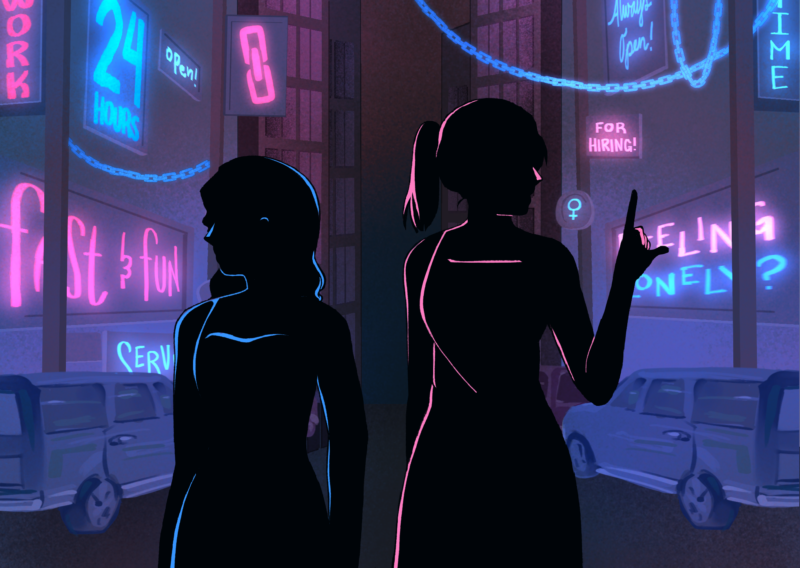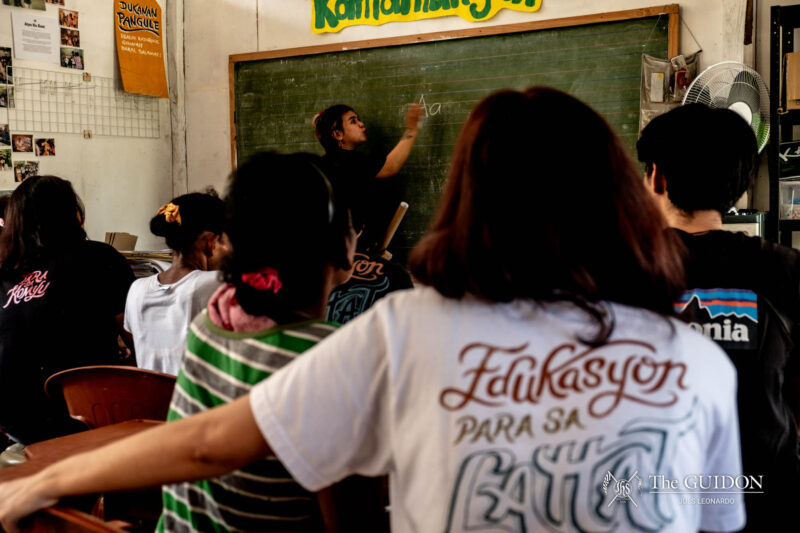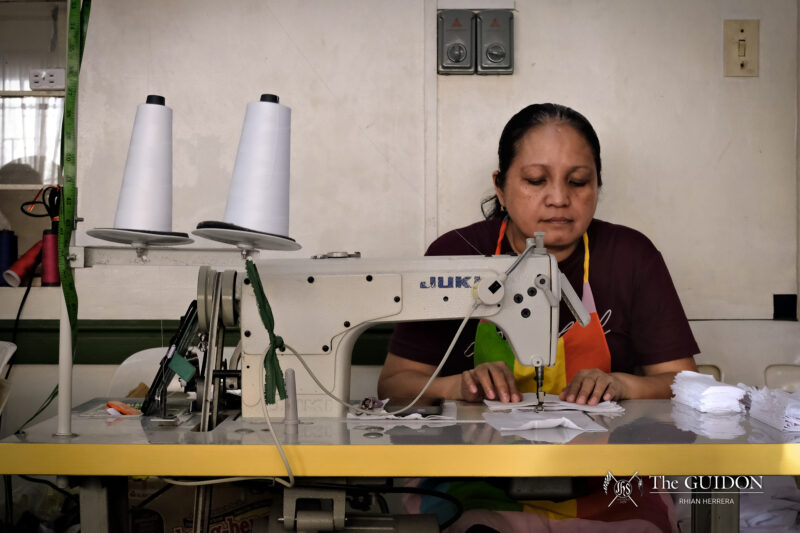Armed with stencils and cans of spray paint, the pseudonymous graffiti artist Banksy graced the sidewalks of London with his satirical pieces. Since 1992, drawings like his Naked Man, hanging on a windowsill of a clinic in England, to his hitchhiking Charles Manson, on Archway in London Borough of Islington, have been subject to public property defacement queries.
Now, Banksy is considered an artist, both by auctioneers and his British supporters. In the Ateneo, however, do desk-writings like “Push button to eject teacher” present a similar breed of deviant artists – or just bored ones?
Pastime for slackers?
A slacker attitude and slipping grades make up the media’s stereotype of a vandal. But ranking top two in her course, Pia*, a junior, breaks this notion. While she agrees with the stereotype to a certain extent, Pia says vandalism shows a vandal’s intellectual capability.
“Most of the vandalism are so intricate [that] there has to be [some] thought behind it,” she says. “It takes some brain to be able to encapsulate that kind of comedic vandal.”
Her greatest vandalism project is a desk on which she wrote peoples’ names, Japanese animation sketches, and her professor’s random words of wisdom. “It makes me remember things,” she says, referring to some of her professor’s jokes and quotes. “It’s [like a] visual diary.”
Jay*, a sophomore, is another self-confessed vandal. His Director’s List status, however, attests to his deviance from the stereotype. Instead of sketching on desks, Jay says, “[I vandalize when] I feel something at that moment, and need to express it in a semi-public way.”
He not only enjoys vandalizing, but also appreciates other vandals’ talents. “[Reading] vandalisms is [my] pastime,” says Jay. “Those who [vandalize] usually want someone else to read [them]. Maybe they want [to make] someone laugh, or they want someone to know [what they are feeling].”
While he admits to vandalizing when he is bored, he does not think that the educational system in Ateneo is the root cause. “If you’re bored in another environment and you happen to be at a table, you’ll do the same thing [vandalize],” says Jay.
One of his vandalisms includes writing, ‘Please stop vandalism. Spread the word. Copy this on three other tables’ on all of his desks since he was a freshman. “Some people [reply], ‘Don’t you think you’re defeating the point?’” he says. “[It’s funny because] they don’t get the irony.”
In an exhibit held in the Manuel V. Pangilinan-Center for Student Leadership basement, a group of students called “Classroom Art” compiled photos of existing vandalisms on desks found in the Ateneo. Nanie de Castro (III AB IS), a member of the group, says their exhibit revolved around armchair vandalism. “We put up [the] exhibit, since schools are a haven for the stuff,” she says. “But [because] vandalism is still unacceptable, we decided to just present vandalism as a means of expression.”
Nanie adds, “Although not all acts of vandalism are done with the initiative of art, there are still a lot of artistically done works of the same nature that are both creative and thought-provoking.” She says among these works are those done by students of the University of the Philippines on the walls surrounding their campus. But most of these are considered vandalism, she says, because no one else can really judge a work as art except for the artist.
No police for the modern Michelangelo
Maan Go, a psychology lecturer, agrees that vandalism is a form of art. However, she adds that artworks can be put in different mediums, so desks are not their only choice.
According to her research on vandalism and adolescent behavior, Go says three kinds of factors may affect a person’s tendency to vandalize: biological, sociological, and psychological. She adds that while there is no real cookie-cutter personality type for vandals, the existing vandalisms on public property become fodder for more scribbles. “The concept of keeping [the desks] clean is no longer there,” she says. “Since they’re already filled with graffiti, what’s another one?”
Go also says the most effective way to stop vandalism is for students to curb the urge to vandalize. “As a teacher, the most I can [do is] reprimand [them], but I won’t file a case,” she says.
According to the Ateneo Undergraduate Student Handbook 2006 Edition, the Code of Discipline for Students states that, “It is the responsibility of students to take care of school property and to help keep the university clean.” However, the disciplinary measures that correspond to a violation for vandalism are not specified.
Student Affairs Officer Herman Livioco, Jr. says the reason behind this is no one has been caught for intentional vandalism. “Of course, the students would not come up and say they did it,” he says in Filipino.
Because of this, Livioco says the administration shoulders the repairs for vandalisms on desks. “We need to fix, paint, or do whatever measures to repair [them],” he says. “We can’t just [leave] it that way.”
Livioco says that if only reports of intentional vandalism will reach their office, strict policies can be made and immediately implemented. For now, Livioco says, “Hopefully the students won’t try doing it since they are taking the chance of being caught. Kailangan bang may guard para sumunod sa policy (Do they need a guard to follow the policy)?”
Barely legal
Policy or no policy, Pia believes that vandalism should not be seen as an offense. “[It] should not be seen as damaging school property because we all want to leave a mark in a small way,” she says.
Similarly, for Jay, vandalism establishes an indirect connection between vandals and their audiences. “When you look at the things people have written, you’ll realize that [you are] not the only one who’s ever felt bored during a class,” he says.
Whether it’s for art, communication, or legacy, Pia, Jay, and Nanie all agree that when it comes to vandalism, it does not matter if it springs from boredom or deviance. For them, what matters is what the artists leave behind.
*Names have been changed to protect the individuals.






